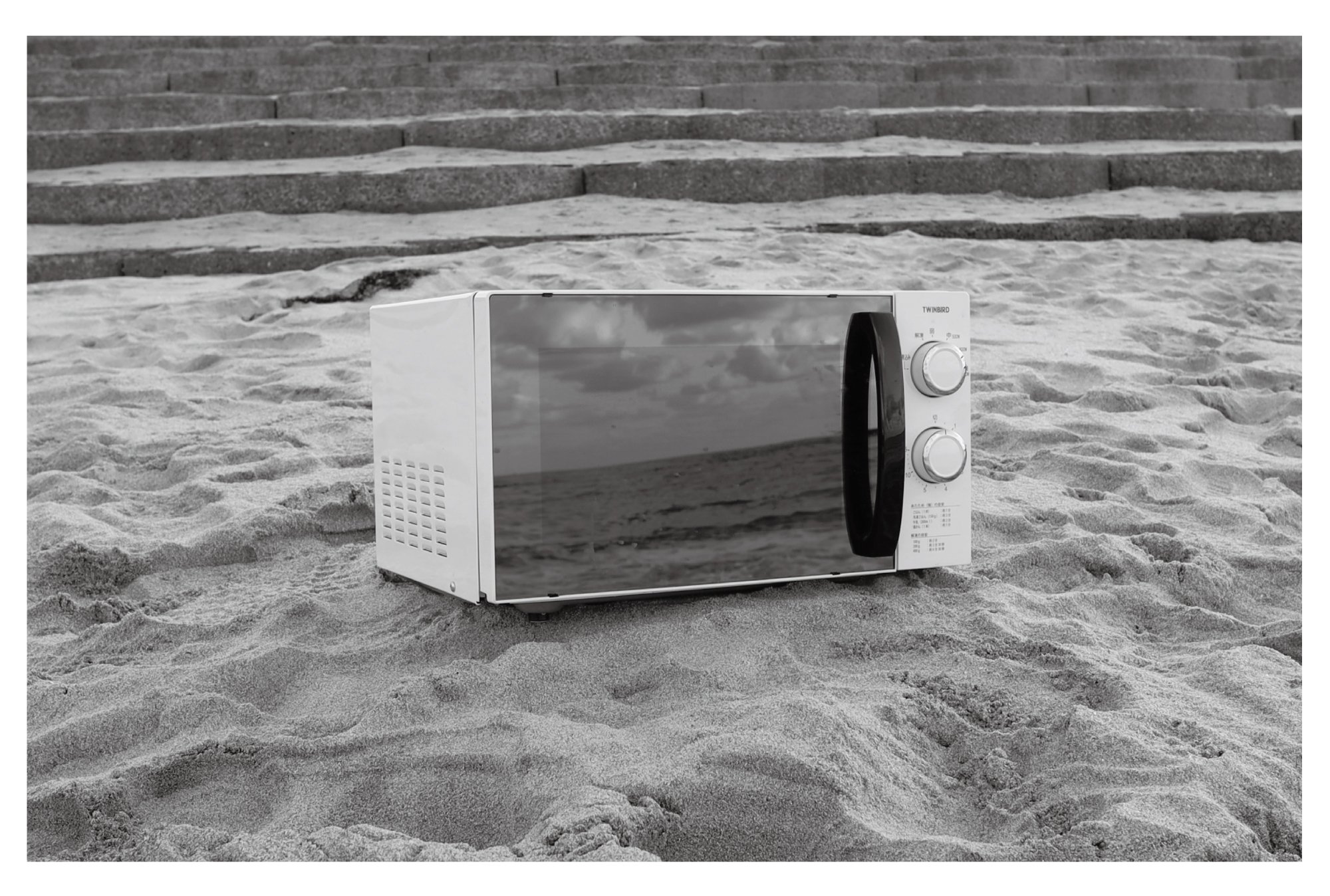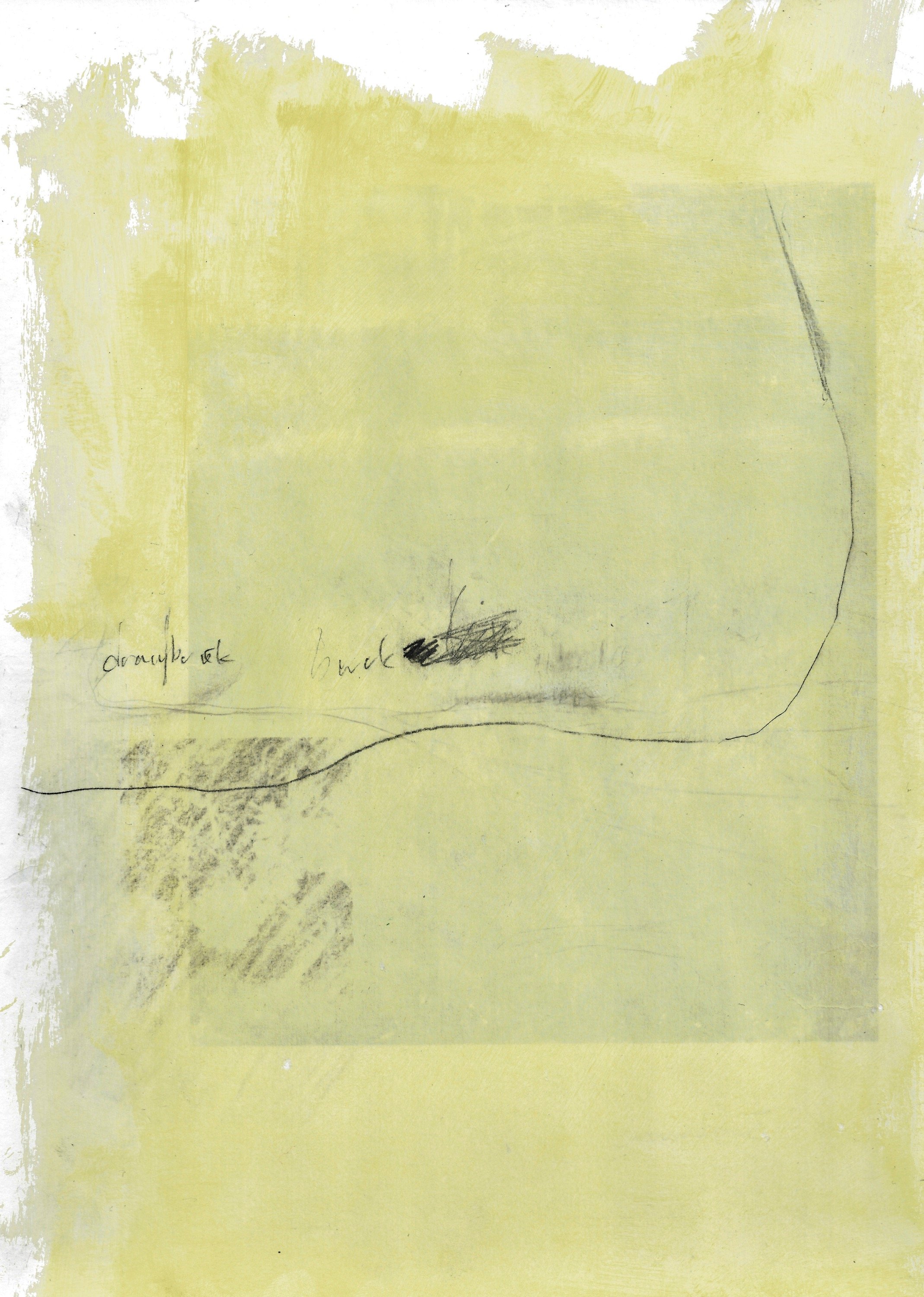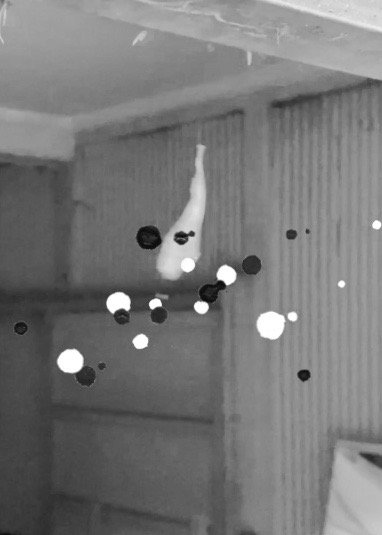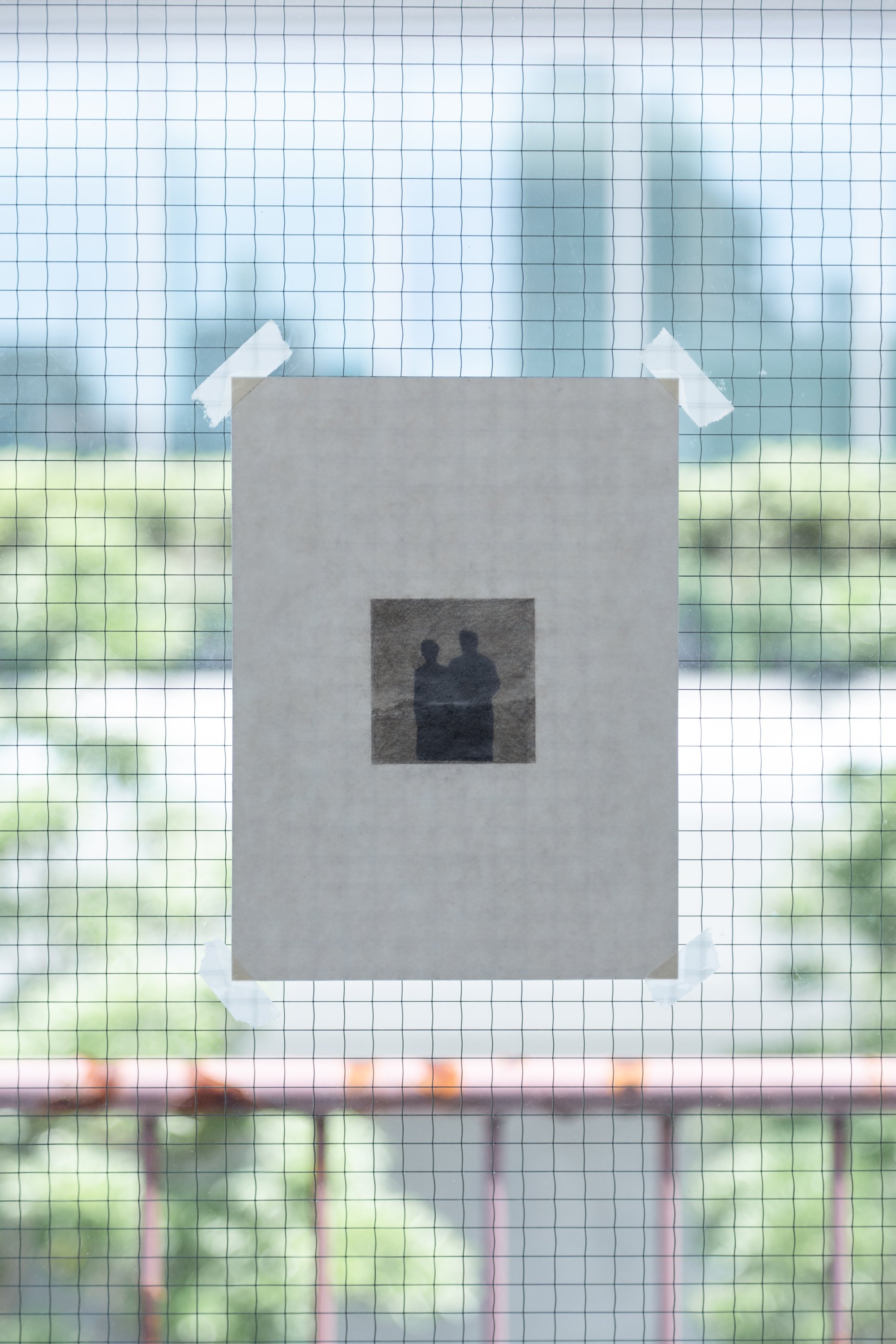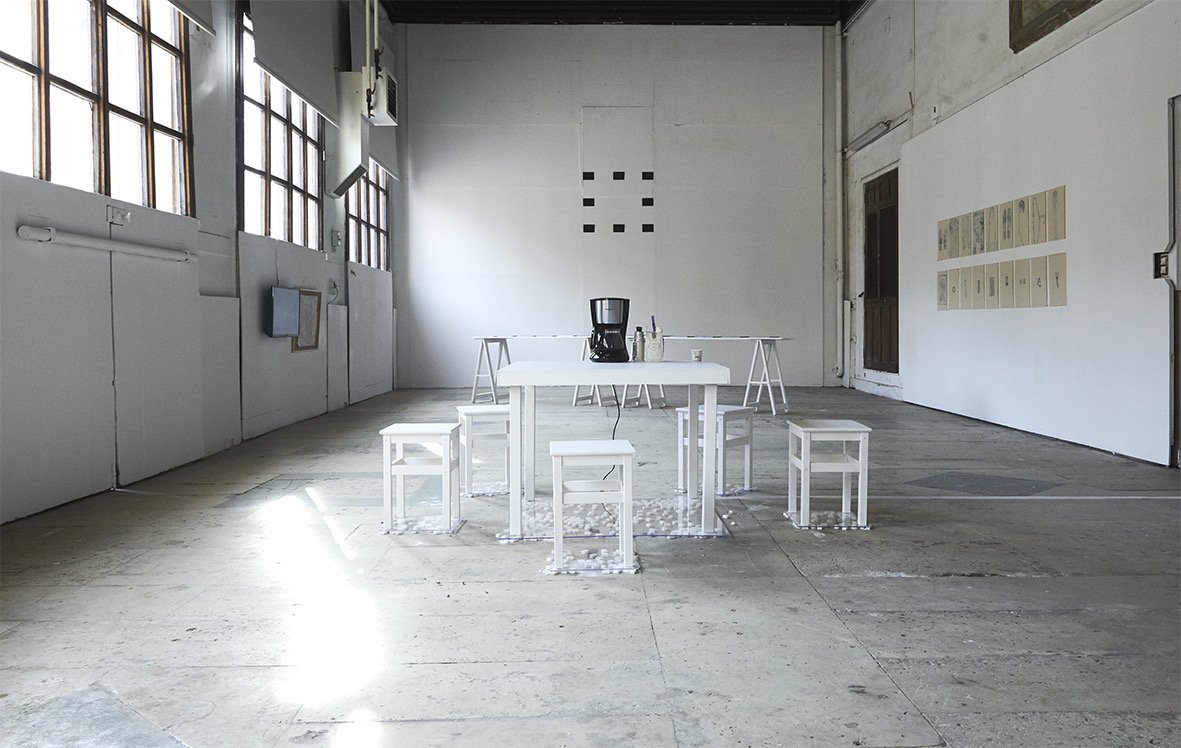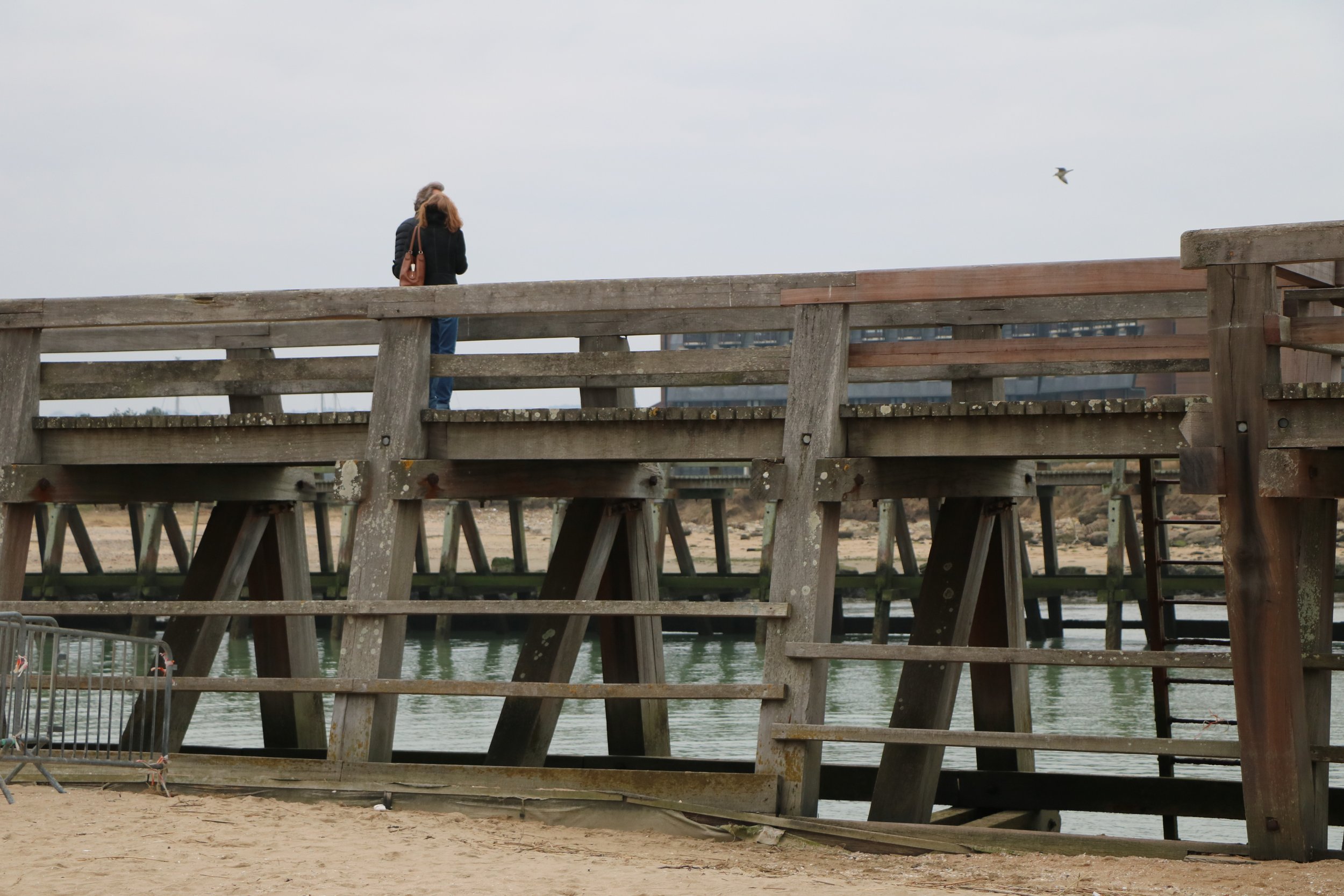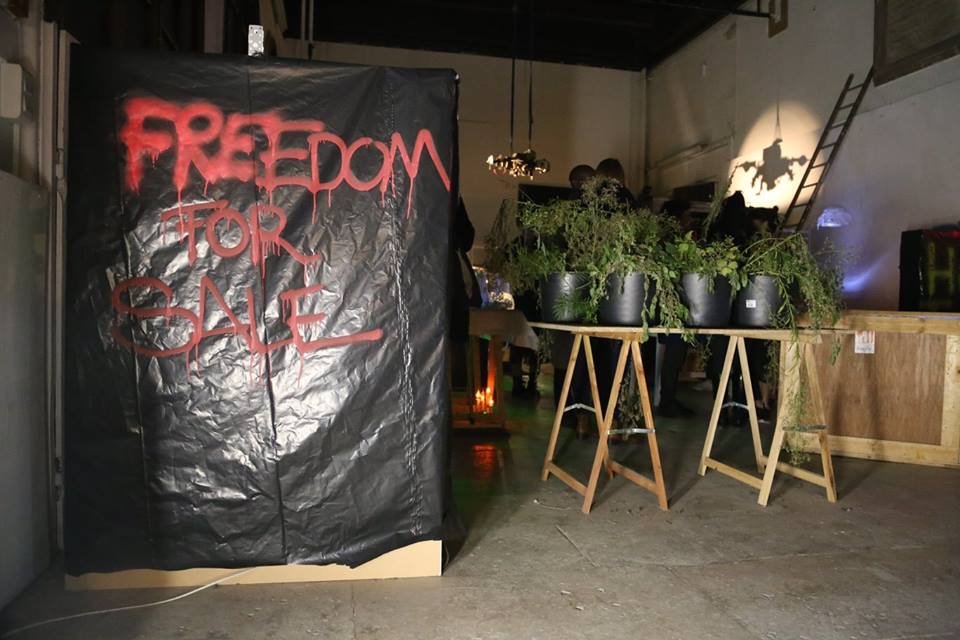高原颯時 長嶺慶治郎 Ryuji Takahara, Keijiro Nagamine
microwaves
20 January–18 February 2022
Artist Afternoon / SAMY PRESS Launch Party: Saturday 21 January, 1-7 pm
この度 CLEAR GALLERY TOKYO にて、高原颯時と長嶺慶治郎による二人展「microwaves」を開催いたします。
高原と長嶺は、あらゆる時間が質的に含まれる可能性を焦点に、絵画や写真、映像、インスタレーションなど様々な媒体で作品を制作をしています。
タイトルにあるmicrowaveは言葉の通り、再熱や解凍を行う装置である電子レンジを指します。また、小さな波を往来させ時間やイメージを行き来する装置であるかもしれません。それは常に過去である作品制作を複数の時間や空間に移動させる可能性を持っています。本展では、いくつかの波にまつわる物事をきっかけにドローイング、映像、オブジェなどを通して、作品の持続的な性質を考察します。
1月21日(土)午後1時から7時まで、本展のオープニングレセプションと作家二人がメンバーであるアーティストブックレーベルSAMY PRESSのお披露目を行います。
Ryuji Takahara and KeijiroNagamine work in a variety of media, including painting, photography, video and installation, with a focus on the possibility of any time being contained qualitatively.
The title of the exhibition "microwave", refers to a microwave oven, which is a device for reheating and defrosting. It could also be a device that sends small waves back and forth between time and images.
It has the possibility to move the production of artworks, which are always in the past, into multiple times and spaces.
In this exhibition, they examine the continuous quality of artworks through drawings, films and objects inspired by a number of wave-related things.
高原颯時・長嶺慶治郎「microwaves」について
microwavesは、時間を題材としているようだ。点と平面、近さと遠さ、音の強弱、不明瞭な境界───事物同士が持続的に関わり合う様子を、いくつかの仕方で見せてくれる。しかし、作品を一つひとつ眺めていても、ギャラリー内にそのような時間が蓄積していく感じはしない。長嶺が設置した装置は、この空間にいる私たちの関係性を、目と耳でとらえられるように実体化させているものの、その関係性はここで充満していくことなく霧散する。高原のドローイングに描かれたマグカップは、再加熱されるほどに湯気を電子レンジ内にたちこめさせ、次第に輪郭が不明瞭になっていく。ところが充満した湯気は、電子レンジののぞき窓に整然と穿たれたパンチングホールによってピクセル状に細分化され、その温もりを鑑賞者に伝えない。遠くへと去った温もりを呼び起こすとともに、再加熱されたものが不在になっていく───そんな満ち引きの動きをどのように受けとめるべきだろうか。
20世紀初頭の作家ヴァージニア・ウルフの小説『波(The Waves)』から着想を得た部分がある、と高原・長嶺は語る。ウルフがこだわったのは、一人ひとりの人生の問題、そしてそれらの人生が、別離と邂逅の果てに渾然一体となることへの神秘主義的な夢であったはずだ。さて、本展示がとらえた波の動きはどうだろうか。ウルフ的な躍動や混沌と違って、ずいぶん整然としている感じがする。まるでコンビニエンス・ストアのような清潔さが漂っている。それは21世紀が獲得した、安定と微細な揺れとを行き来する空間であり、私たちをどこか安心させる。
プロセスとしての持続性は、それが累積していくことで作品の強度が増していく、という論理に基づいていると言える。動きによる変化こそ最大の情報であり、動き続けることで作品の情報量は累積し、効果を生み出すことになる。しかし、情報の連鎖、累積としてのプロセス性(フィッシュリ&ヴァイス「事の次第」(1987年)またはピタゴラスイッチ)ではなく、何度もくり返してはそのつど消える、個々に分離された情報がもたらす反復性が、microwavesを特徴づけている。
24時間営業のスポーツジムのような、あるいはコンビニで稼働する電子レンジのような、静かな加熱のプロセスを思い浮かべてみよう。ウォームアップした身体は、予定どおりの反復運動を終えれば再びクールダウンし、都市の雑踏のなかに消えていく。トレーニングマシンの汗は拭き取られ、入念に殺菌される。たしかに、トレーニングに比例して筋繊維が密度を増していく不可逆的な動きがある。だがそれよりも、安定状態に戻ることを約束された一時的な振動が、都市生活のリズムを生み出している。同じようにmicrowavesには、ボルテージの上昇がなく、一定のリズムで動く時間の中に留まろうとしている(等間隔の配置、同サイズの画面、同口径のパンチホール......)
コンビニの自動ドアが、近づく者を察知しては開き、閉じる。毎日どこかのレジで、匿名の誰かに「温めますか?」という問いが投げかけられる。インスタントな加熱に慣れた私たちは、高原と長嶺がそうするように、不可逆的で鍛錬的なプロセスという観念から自由になった想像力について考えることができる。表現のボルテージを上げることなく、事物へと───それが含む時間の手触りへと───接近する可能性について考えることがおそらくできる。
渡辺惟央(フランス文学・思想史研究)
On “Microwaves”
“Microwaves” aims to describe time in some way, especially in the continuous relationships between points in the same plane, closeness and distance, strong and weak sound, and indistinct boundaries of all things. However, each work would not give us such feeling of time accumulating in the gallery. Even though devices installed by Keijiro Nagamine materialize the relationships among us in the space and allow us to capture them with our eyes and ears, these relationships would not fill up the space ; they simply spread out. In Ryuji Takahara’s drawings, the mugs gradually lose their outlines as they are reheated in the microwave oven, being clouded with steam inside. The image of the steam, however, is orderly punched and finely pixelized by a hole puncher on the window of the microwave oven, which does not make us feel the warmth of the steam. How should we perceive these ambivalent movements -- the evocation of distant warmth and the absence of reheated objects at the same time?
Takahara and Nagamine say that they were inspired by the novel “The Waves” by Virginia Woolf. Woolf was concerned with individual life problems and the mystical dream of their becoming one through separations and reunion. Then, what about the movement of the waves captured by this exhibition ? Unlike dynamic and chaotic movements Woolf represented, it seems much more orderly, just like cleanness of a convenience store in Japan. It is a space that goes back and forth between stability and fluctuations, which the 21st century has achieved, and which makes us feel at ease somehow.
The exhibition reminds us of a quiet heating process, such as a 24-hour sports gym or a microwave oven in a convenience store. Once the workout is over, a warmed up body cools down again, and disappears into a crowd in the city. The sweat he left on the training machine is wiped off and the training machine is carefully sterilized. Indeed, there is an irreversible movement of muscle fibers that increase in density in proportion to the training. But more than that, it is the temporary oscillations that promise a return to a stable state, which creates the rhythms of urban life. In the same way, “Microwaves” try to remain in time moving in a constant rhythm (equally spaced picture frames, screens and punching holes......)
This exhibition therefore encourages us to reconsider the notion of process. In fine art, the process is usually based on the logic that the intensity of a work increases with the volume of information. According to this logic, change through movement is the most important information, and the continuous movement of a work accumulates the amount of information in the work and produces an effect (as in Fischli & Weisss’s “The Way Things Go” (1987)). However, instead of process as a chain of information, “Microwaves” is characterized by the repetition of discrete pieces of information that repeat over and over and then disappear each time.
Imagine an automatic door at a convenience store opens and closes when it senses someone approaching. Every day, somewhere at a cash register, the question “Do you want it warmed up?” is poster to someone anonymously. Those who are familiar with instant heating might be able to think, as Takahara and Nagamine do, about imagination freed from the idea of an irreversible process. We might also be able to think about the possibility of approaching a thing -- and the texture of time it contains -- without raising the voltage of expression.
Io WATANABE (Scholar of French literature and history of ideas)
高原 颯時 / Ryuji Takahara
1992 年生まれ。京都造形芸術大学(現・京都芸術大学)卒業。
アーティストブックレーベル SAMY PRESS のメンバー。
主な展覧会に「Reheat」(STUDIO STAFF ONLY, 東京, 2020)、
「PARTY」(CLASS, 東京, 2020)、
「Nice shop su 5th anniversary exhibition」(pehu, 大阪, 2019)など。
Artist, Designer, illustrator
Born in1993, based in Tokyo
Graduated from Kyoto University of the Art
長嶺 慶治郎 / Keijiro Nagamine
https://www.keijironagamine.com/
1993 年生まれ。京都造形芸術大学(現・京都芸術大学)卒業。パリ国立高等美術学校修士課程修了。
アーティストブックレーベル SAMY PRESS のメンバー。
主な展覧会に「Milieu des Choses」(POUSH, パリ, 2022)、
「コンパスも回らない」(KAWAKYU ART Exhibition 2022, 川久ミュージアム,
和歌山, 2022)、「Illusions never come alone」(Palais des Etudes, パリ, 2020)など。
Born in1993, based in Kyoto / Paris
2015 Kyoto University of the Art Information Design (BFA)
2018 École nationale supérieure des beaux-arts de Paris (BFA)
2020 École Nationale Supérieure des Beaux-Arts de Paris (MFA)
Exihibition
2023 SCREW DRIVER ART SHOW vol.1(OVERGROUND, Fukuoka)
2023 microwaves(CLEAR GALLERY TOKYO, Tokyo)
2022 Félicita Milieu des Choses(POUSH, Paris)
2022 KAWAKYU ART EXHIBITION 2022(Hotel KAWAKYU, Wakayama)
2021 W(soco1010, Tokyo)
2020 Illusions never come alone(Beaux-arts de Paris, Paris)
2018 Répetition(Beaux-arts de Paris, Paris)
2018 Espace de Reflexion(SPIRAL, Tokyo)
2016 Nuit des Musées(MAC/VAL, Paris)
2022 KAWAKYU ARTIST IN RESIDENCE PROGRAM(Wakayama)
Prize
2020 École nationale supérieure des beaux-arts de Paris Félicitation
/////////////////
SAMY PRESS
高原颯時、長嶺慶治郎、村尾雄太によって運営されているアーティストブックのレーベル。
図録やカタログとは違った、それ自体が作品として機能する支持体としての出版物のリサーチ、制作をアーティストと共同で行い、展覧会とは違う形で、作品を広く届けることを目的に活動しています。
最初の出版として、SAMY PRESSのメンバーでもある高原颯時による本展覧会と同タイトルのアーティストブック「microwaves」と、長嶺慶治郎と高原颯時によるポストカードの作品postcard (I’m not the one who sent this )を発表いたします。
